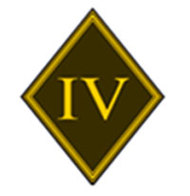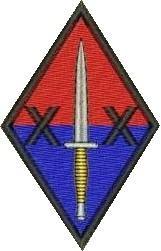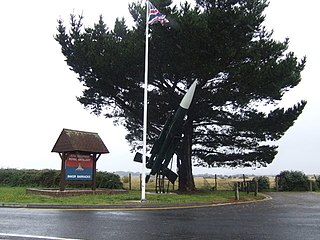
The Falkland Islands are a British overseas territory and, as such, rely on the United Kingdom for the guarantee of their security. The other UK territories in the South Atlantic, South Georgia and the South Sandwich Islands, fall under the protection of British Forces South Atlantic Islands (BFSAI), formerly known as British Forces Falkland Islands (BFFI), which includes commitments from the British Army, Royal Air Force and Royal Navy. They are headed by the Commander, British Forces South Atlantic Islands (CBFSAI), a brigadier-equivalent appointment that rotates among all three services.

The Royal Regiment of Artillery, commonly referred to as the Royal Artillery (RA) and colloquially known as "The Gunners", is one of two regiments that make up the artillery arm of the British Army. The Royal Regiment of Artillery comprises thirteen Regular Army regiments, the King's Troop Royal Horse Artillery and five Army Reserve regiments.

Rapier is a surface-to-air missile developed for the British Army to replace their towed Bofors 40/L70 anti-aircraft guns. The system is unusual as it uses a manual optical guidance system, sending guidance commands to the missile in flight over a radio link. This results in a high level of accuracy, therefore a large warhead is not required.

The 16th Regiment, Royal Australian Artillery is the Australian Army's only ground-based air defence (GBAD) unit. It also provides sense, warn and locate, ground liaison, and joint terminal attack control capabilities. Part of the Royal Regiment of Australian Artillery (RAA), the regiment is responsible for protecting a wide range of military assets during wartime, ranging from Army units in the field to providing point defence to the Royal Australian Navy's support ships and air defence to Royal Australian Air Force air bases. Prior to being equipped with the currently in-service RBS 70 surface-to-air missile system, the regiment was equipped with the Rapier systems for 25 years. The regiment is based at Woodside, South Australia, but frequently deploys with other Australian and allied units on operations and defence exercises. The regiment is part of the 6th Combat Support Brigade.
47 Regiment Royal Artillery is a regiment of the Royal Artillery in the British Army. It is equipped with the Thales Watchkeeper WK450. It is located at Horne Barracks, Larkhill in Wiltshire. It falls under command of Joint Helicopter Command.
39 Regiment Royal Artillery (RA) was part of the British Army's Royal Artillery. Its name is pronounced "three nine", The Regiment was one of the Depth fire units of 1st Artillery Brigade, part of the British Army. It was formed in 1947, and placed into suspended animation on 20 February 2015. The Regiment was based at Albemarle Barracks in Northumberland.

The 4th Regiment Royal Artillery is a regiment of the Royal Artillery in the British Army. It was formed in 1939 as 4th Regiment Royal Horse Artillery, before being redesignated in 1961.

12 Regiment Royal Artillery is a regiment of the Royal Artillery in the British Army. It currently serves in the air defence role, and is equipped with the Starstreak missile.
35 Battery Royal Artillery was part of the Royal Artillery. Its name is pronounced "three five", The battery is one of the sub-units of 39th Regiment Royal Artillery, part of the British Army. It was formed in 1765. It is the senior battery.
N Parachute Battery Royal Horse Artillery is a Tactical Group Battery of 7th Parachute Regiment Royal Horse Artillery. They are currently based in Merville Barracks Colchester, home of 16 Air Assault Brigade Combat Team.

20 Battery Royal Artillery is the headquarters battery of the 16th Regiment Royal Artillery. It is one of the five batteries that make up 16 Regiment Royal Artillery. The Regiment use the Rapier Field Standard C air defence missile system and the Land Environment Air Picture Provision (LEAPP) capability, the only Regiment in the British Armed Forces to do so.

53 (Louisburg) Air Assault Battery is the second most senior artillery battery. Formed in 1740, the battery is currently part of 5th Regiment Royal Artillery and is based at Marne Barracks, Catterick, North Yorkshire. The battery operates in a Surveillance and Target Acquisition role in support of 16 Air Assault Brigade Combat Team.

Baker Barracks is a British Army barracks located on Thorney Island around 6.58 miles (10.59 km) east from Portsmouth, Hampshire.
30 Battery Royal Artillery is a unit of the British Army founded in 1759, and currently part of 16 Regiment Royal Artillery

The 1st Artillery Brigade was a support formation of the British Army from 1961-77 and from 1997. Part of the 3rd Division, it oversaw all army close support artillery and deep fires units. Under the Future Soldier programme, the brigade merged with 1st Armoured Infantry Brigade to form 1st Deep Reconnaissance Strike Brigade Combat Team.

The Joint Ground Based Air Defence Headquarters or JtGBAD HQ was a joint (non-deployable), force-generating British military formation under the operational command of RAF Air Command, sitting under No.1 Group. It was formed circa 2000 and disbanded in 2019 in favour of 7th Air Defence Group.
T Battery Royal Artillery is an air defence battery of the Royal Artillery that serves with the British Army's 12 Regiment Royal Artillery. It is stationed at Baker Barracks, Thorney Island, West Sussex.

9 (Plassey) Battery Royal Artillery is an air defence battery of the Royal Artillery that serves with the British Army's 12th Regiment Royal Artillery. It is stationed at Baker Barracks, Thorney Island, West Sussex.
Land Environment Air Picture Provision (LEAPP) is a British military capability introduced in early 2015. The capability was developed as part of a UK specific requirement to deliver a highly mobile local fused Recognised Air Picture capability to land component and formation headquarters. Its development was led by Lockheed Martin (UK) along with a number of other defence contractors, including SAAB.

7th Air Defence Group is a formation of the British Army and part of 3rd Division. It is responsible for all the army's ground based air defence assets. All of the organisation's subordinate units are drawn from the Royal Regiment of Artillery. The headquarters are located at Baker Barracks, Thorney Island.













